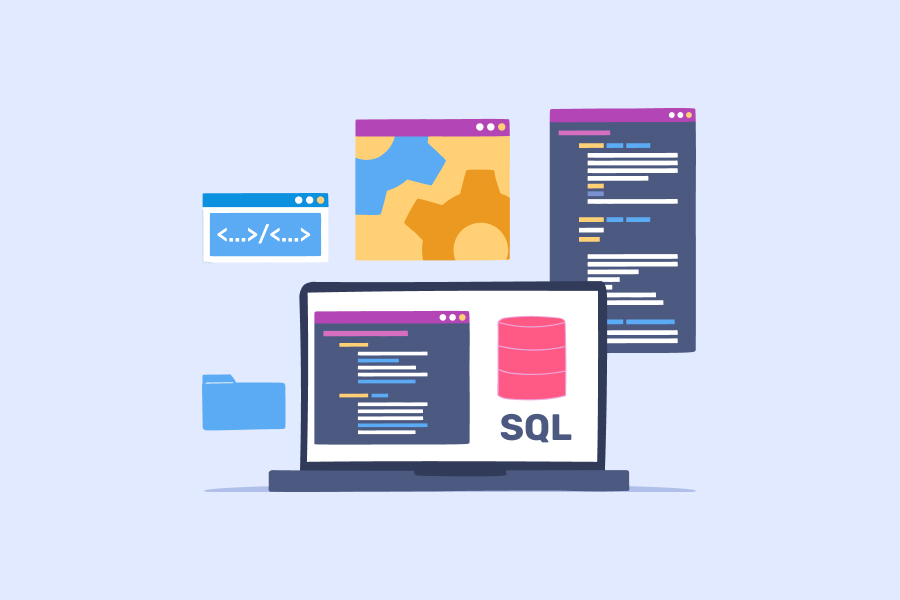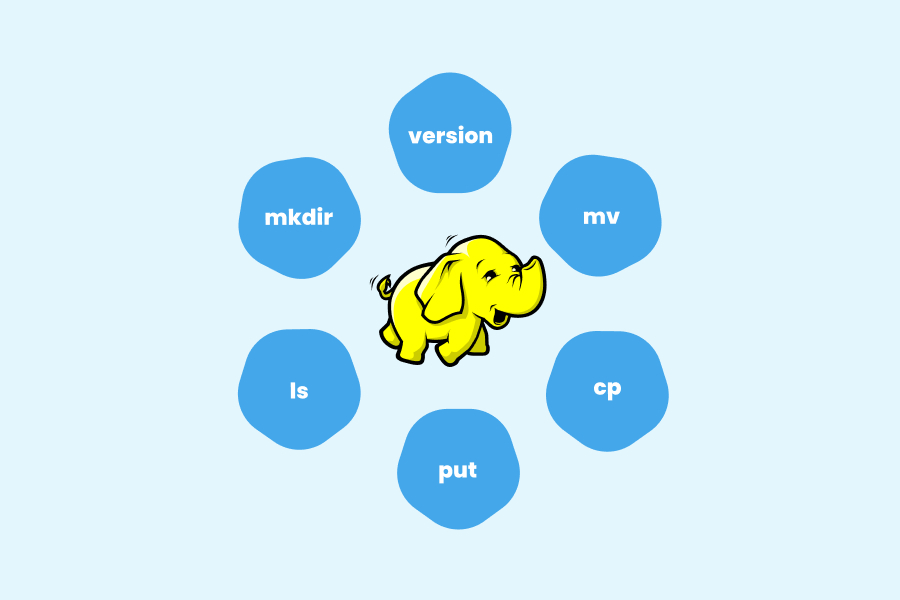Top 45 Database Interview Questions and Answers
Did you know that in software development and data management, interviews play a pivotal role for job seekers and employers alike? For aspiring database professionals, navigating an interview on databases demands a profound comprehension of database principles, query optimization, and data modeling. This blog uncovers some basic database interview questions and answers, revealing fundamental concepts crucial for effective preparation.
What are Databases?
Databases are like organized filing cabinets for digital information. They store and manage data, like a company’s sales records or a library’s book catalog. People can easily find, add, or update information using special languages or tools. Different types of databases suit different needs, from traditional tables to more flexible structures. Learn SQL to understand how to manage and work with data effectively.
Basic Database Interview Questions for Freshers
Understanding the core principles of databases is essential for anyone entering data management. Foundational concepts lay the groundwork for efficient database design, optimization, and maintenance. Here are some pivotal database interview questions that look into these fundamental concepts.
1. What is a Database Management System (DBMS)?
A Database Management System (DBMS) is a type of software designed to handle and organize databases. It offers a way for users and applications to effectively work with data stored in different formats.
Get an Assured Job guarantee by enrolling in our data science course with placement.
2. Differentiate between SQL and NoSQL databases.
This question aims to assess the candidate’s understanding of the varied database landscape. SQL databases use structured query language and adhere to predetermined schemas, while NoSQL databases offer flexibility and store data in various formats, such as key-value, document, column-family, or graph structures.
3. Explain the ACID properties in the context of databases.
ACID stands for atomicity, consistency, isolation, and durability.
- Atomicity – It guarantees that transactions are treated as a single unit, succeeding entirely or being fully undone in case of failure.
- Consistency – It maintains data integrity through rule adherence, undoing transactions that violate constraints.
- Isolation – It prevents conflicts by keeping transactions separate until completion, avoiding simultaneous access issues.
- Durability – It ensures changes survive failures, as modifications are stored to withstand crashes or power loss, ensuring permanent data changes.
4. What is Normalization?
Normalization in databases aims to enhance data storage efficiency by dividing large tables into smaller ones, establishing relationships between them, and minimizing redundancy, resulting in a more organized database design.
5. Define an index in the context of databases.
A database index is a structure that accelerates data retrieval by functioning like an index in a book. It aids in locating rows with specific values in columns, thereby enhancing query efficiency, although it necessitates storage and may potentially affect updates.
6. How does a JOIN operation work?
The JOIN operation brings together data from multiple tables using shared columns. Different types of JOINs control how matching and non-matching rows are combined. This process involves comparing values and merging rows based on set conditions.
7. Explain the concept of database denormalization.
Denormalization entails introducing redundancy into a relational database to enhance query speed by minimizing the need for joins. This approach can give rise to data integrity concerns and increased maintenance complexity.
8. What is the CAP theorem?
The CAP theorem asserts that in a distributed system, you can’t simultaneously achieve Consistency, Availability, and Partition tolerance. You must prioritize two of these qualities while compromising on the third.
9. What is a stored procedure?
A stored procedure is a reusable set of SQL statements stored in a database. It streamlines tasks like data manipulation, retrieval, and updates, improving efficiency and maintainability by centralizing code execution within the database.
10. How do you ensure data security in a database?
Data security in databases is maintained by using encryption, access controls, audits, and updates. Strong authentication, permissions, and monitoring thwart unauthorized access and breaches.
11. What are the different types of database testing?
Database testing involves various types to ensure data accuracy and reliability. These include:
- Data Integrity Testing
- Data Validity Testing
- Performance Testing
- Concurrency Testing
- Security Testing
Please note that when it’s about database testing interview questions candidates might face queries about these types, so understanding them is very important.
Database Interview Questions for Intermediate-Level
Intermediate Level Interview Questions about databases go beyond the basics. They test a candidate’s in-depth knowledge of database management. Here are some intermediate-level questions:
In database management, different types and models of databases play an important role in shaping data storage and retrieval strategies. These concepts lay the foundation for efficient data handling in various scenarios. Here are some questions related to Database Types and Models:
11. Explain the concept of database sharding.
Database sharding divides a database into smaller parts (shards) for better scalability. Each shard stores specific data, distributing workload and enhancing performance in distributed systems with large datasets.
12. What are NoSQL databases, and when would you choose to use one?
NoSQL databases store unstructured data and provide flexibility and scalability. They are preferred for their speed and scalability, prioritizing these aspects over strict data consistency, making them well-suited for applications with diverse or evolving data requirements.
13. Differentiate between OLTP and OLAP databases.
OLTP (Online Transaction Processing) databases handle real-time, high-volume transactional operations, focusing on data integrity and fast response. OLAP (Online Analytical Processing) databases manage complex queries for data analysis, supporting decision-making through aggregated data.
Also, read our blog on OLTP vs OLAP to get a better understanding.
14. What is a foreign key?
A foreign key is a database concept that establishes a link between two tables. It references the primary key of another table to maintain referential integrity and enforce relationships between data.
15. Explain the concept of a deadlock in a database.
A deadlock in a database occurs when two or more transactions are unable to proceed because each is waiting for a resource that the other holds, resulting in a standstill.
Query Optimization and Performance – Interview Questions
Query optimization and performance stand as vital pillars that determine the efficiency and responsiveness of a database system. Here are some questions related to Query Optimization and Performance:
16. What is the difference between a clustered and a non-clustered index?
A clustered index organizes data rows in a table based on their order, while a non-clustered index creates a separate structure containing pointers to data rows, allowing for efficient data retrieval.
17. How does data replication work, and what are its benefits?
Data replication involves the creation and maintenance of copies of data across multiple locations or servers. It enhances data availability, fault tolerance, and load distribution, thereby improving system reliability and performance. Data replication also supports disaster recovery and facilitates efficient data access for users.
18. Discuss the concept of data warehousing.
A data warehouse is a centralized repository that stores, integrates, and manages large volumes of structured and sometimes unstructured data. It enables organizations to analyze historical and current data for informed decision-making and business intelligence.
19. What is a trigger in the context of databases?
A trigger in databases is a predefined set of actions that automatically execute when certain events, like insertions, updates, or deletions, occur in a table. It helps maintain data integrity and consistency.
20. Explain the term “Isolation Level” along with examples.
Isolation level refers to the level of data visibility and control in a database transaction. It determines how changes made by one transaction are visible to other transactions.
Examples include: READ UNCOMMITTED, READ COMMITTED, REPEATABLE READ, and SERIALIZABLE.
21. How can you optimize a database query?
Optimize database queries by using indexes, limiting returned columns, and employing efficient WHERE clauses. Normalize data, avoid unnecessary joins, and consider caching results for improved performance.
Distributed Databases and Consistency- Interview Questions
Distributed databases provide scalability and enhanced performance, but they introduce the challenge of maintaining data consistency in a decentralized environment. Let’s explore some pivotal questions that shed light on distributed databases and their consistency models.
22. Discuss ACID vs. BASE consistency models.
D ensures strict data integrity but can lead to slower performance. BASE prioritizes availability and responsiveness, relaxing consistency for better scalability and speed.
23. What is the purpose of the GROUP BY clause?
The GROUP BY clause is used to group rows with similar values in a specified column. It’s used with aggregate functions like SUM or COUNT to summarize data and generate reports based on specific categories.
24. Explain the concept of data partitioning.
Data partitioning divides a dataset into distinct partitions, enhancing processing and storage efficiency. By organizing data into smaller subsets, this technique optimizes retrieval and system performance.
25. How can you ensure data integrity across multiple tables?
Data integrity across multiple tables can be ensured through proper relational database design, using primary and foreign keys, constraints, and normalization. Regular validation checks and transactions also help maintain data consistency and accuracy.
26. Describe the concept of data normalization in detail.
Data normalization is a process in which data is rescaled to have consistent scales, often between 0 and 1, to improve model training and performance. It reduces biases caused by varying ranges, aiding comparisons and analysis.
Advanced Database Interview Questions for Experienced
For candidates aiming to show their database management skills, it’s important to know advanced level concepts, in order to have a strong grasp of database systems. Let’s see some advanced database interview questions:
27. What are the benefits of using an ORM (Object-Relational Mapping) framework?
ORM frameworks simplify database interactions by mapping database tables to object-oriented models. They automate tasks like data retrieval and updates, reduce manual SQL coding, and enhance code organization and maintenance.
28. Explain the concept of a “self-join.”?
A “self-join” is when a database table is joined with itself. It’s used to combine rows within the same table based on common attributes, creating a connection between different records.
29. What is data masking, and why is it important?
Data masking is the process of disguising original data while keeping its essential characteristics. It’s vital for privacy and security, to ensure sensitive information is protected during testing, analytics, or sharing.
30. How do you handle database versioning and migration?
Data masking is concealing original data with fictitious but realistic information to protect sensitive data during testing or sharing, maintaining privacy and security.
Data Management and Optimization- Interview Questions
Efficiently managing and optimizing data is at the core of database administration. It involves refining data structures, ensuring data integrity, and implementing strategies to enhance performance. Here are some important questions:
31. What is the purpose of the HAVING clause in SQL?
The HAVING clause in SQL filters grouped data after using the GROUP BY clause. It specifies conditions for aggregated values, allowing the selection of specific groups meeting the criteria.
32. Discuss the advantages and disadvantages of using a denormalized database.
Denormalized databases offer faster query performance and simpler data retrieval due to reduced joins, but they can lead to data redundancy, increased storage requirements, and update anomalies.
33. How do you handle data backups and recovery in a database?
Data backups involve copying database information to a separate location, ensuring data preservation. Recovery involves restoring data from backups in case of failures, minimizing downtime and data loss.
34. Explain the concept of data lakes.
A data lake is a vast storage repository that holds large amounts of raw data in its native format. It allows organizations to store diverse data types for analysis, enabling flexible and scalable data processing.
35. What is the role of an ETL process in databases?
The ETL process in databases involves extracting data from various sources, transforming it into a consistent format, and loading it into a target database for analysis and reporting.
36. Discuss the concept of database normalization beyond the third normal form (3NF).
Normalization beyond 3NF involves Boyce-Codd Normal Form (BCNF) and Fourth Normal Form (4NF), refining data organization to minimize redundancy and maintain integrity in databases.
Performance Tuning and Administration- Interview Questions
In Database management, ensuring optimal performance and efficient administration is paramount, Here are some Performance Tuning and Administration questions that candidates should be well-versed in:
37. How do you monitor and optimize database performance?
Monitor databases using tools and metrics. Optimize through indexing, query tuning, and regular analysis for improved performance and reliability.
38. What is the difference between a primary key and a unique key?
Both primary and unique keys ensure data uniqueness, but a primary key also enforces data integrity and establishes relationships, while a unique key does not have the same constraints.
Also, explore the difference between primary key and Foreign key in SQL.
39. Explain the concept of database replication lag.
Database replication lag refers to the delay between changes made to a primary database and their propagation to secondary replicas. It occurs due to network latency, processing time, or resource constraints.
40. What are data consistency anomalies, and how can they be prevented?
Data consistency anomalies result from concurrent database operations. Prevent them with locks, isolation levels, and transactions, ensuring one operation modifies data at a time for integrity.
41. Describe the purpose of the TRUNCATE statement.
The TRUNCATE statement removes all rows from a table quickly, but it cannot be rolled back and doesn’t generate individual delete statements as the DELETE statement does.
42. Discuss the role of a database administrator (DBA).
A database administrator (DBA) manages, maintains, and secures databases. They ensure data integrity, performance, and availability, handle backups, and user access, and troubleshoot issues to support efficient and reliable data storage and retrieval.
43. How can you improve the performance of a slow-running query?
To improve a slow-running query, optimize the database schema, add indexes to frequently queried columns, limit data retrieval using WHERE clauses, and consider caching mechanisms for frequently requested data.
Data Governance and Documentation- Interview Questions
Data governance serves as the cornerstone for achieving these objectives, establishing frameworks that guide the responsible use and management of data within organizations. Here are some Data Governance and Documentation questions:
44. Explain the concept of data governance.
Data governance involves managing, protecting, and ensuring the quality of an organization’s data. It establishes policies, processes, and roles to ensure data accuracy, security, compliance, and effective utilization.
45. What is the purpose of a data dictionary in a database?
A data dictionary in a database serves as a reference guide, documenting data elements, their attributes, relationships, and definitions. It aids in data management, consistency, and understanding within the database system.
Conclusion
In this article, we’ve looked into a wide range of database interview questions that can boost your performance and demonstrate your expertise to potential employers. So, why don’t you drop us a comment below and let us know which part you found most informative? Remember, in the world of database management, staying adaptable and committed to continuous learning is key to a successful career.







